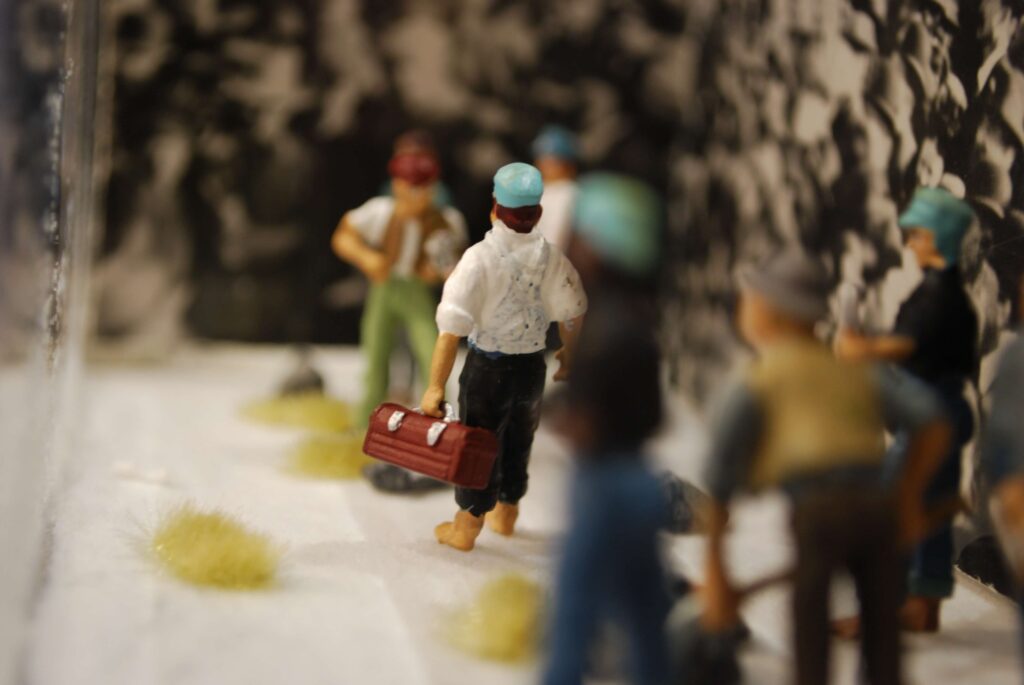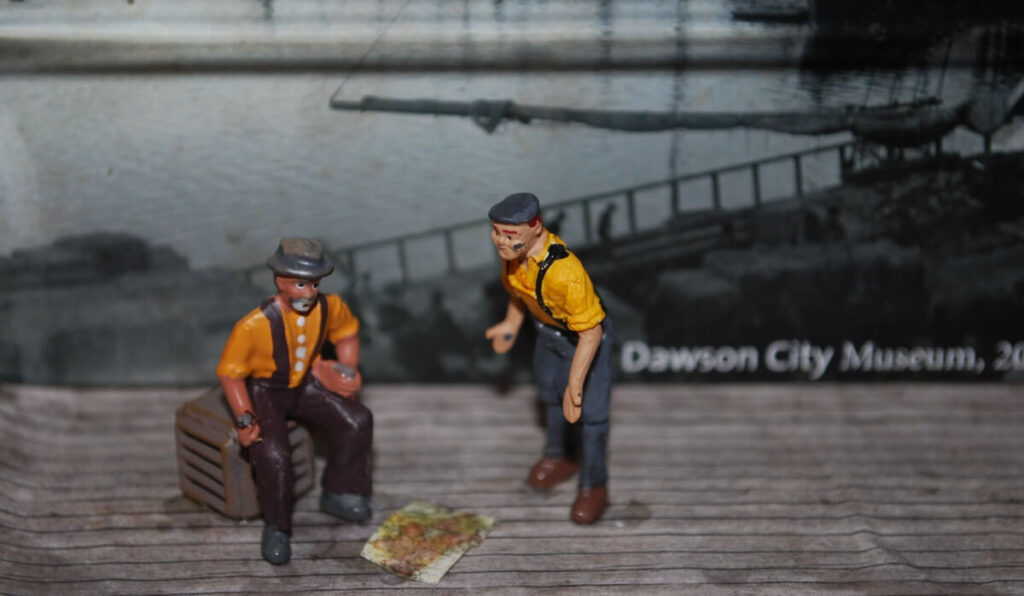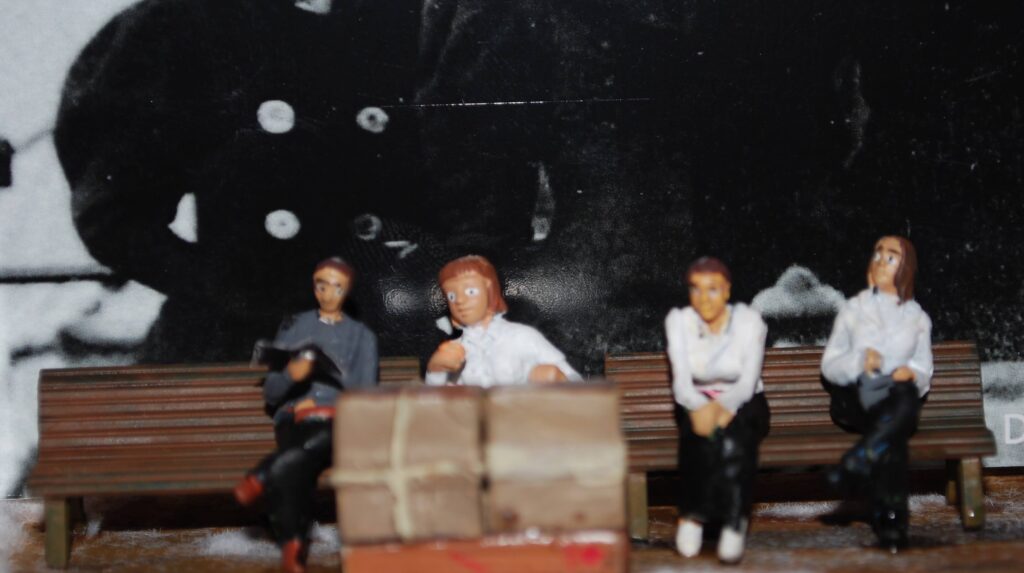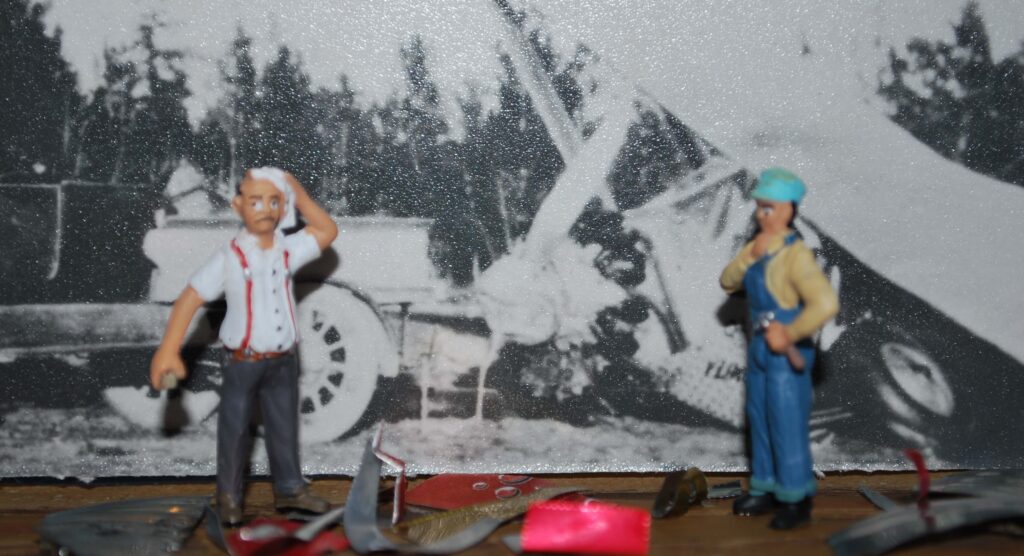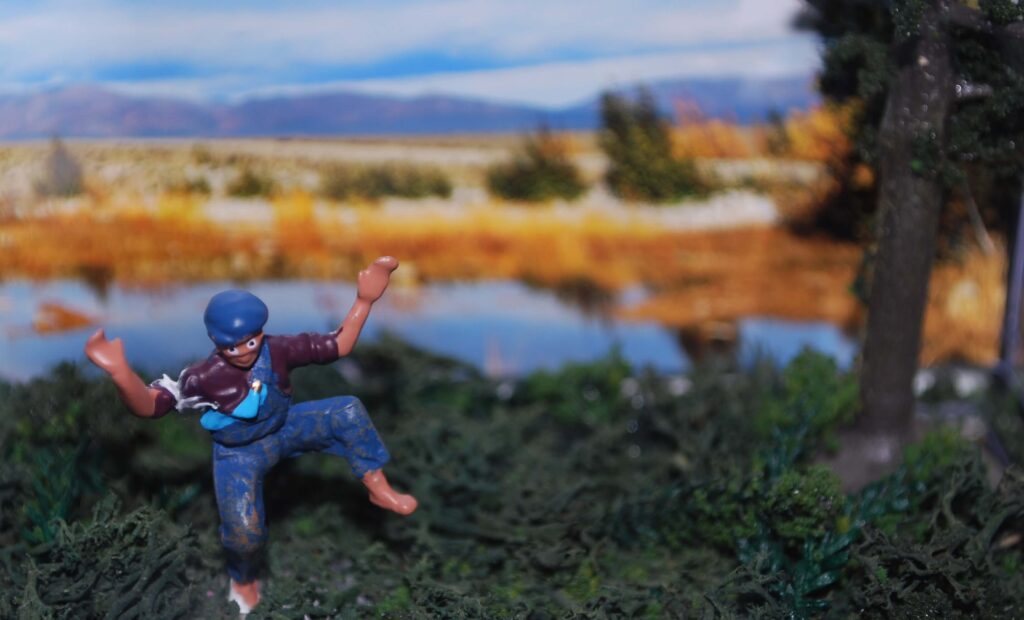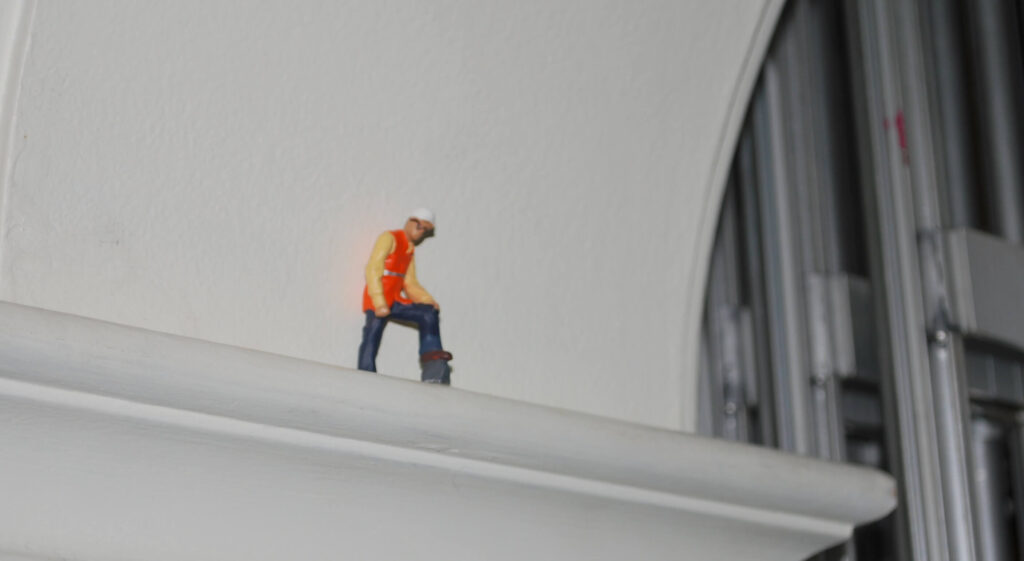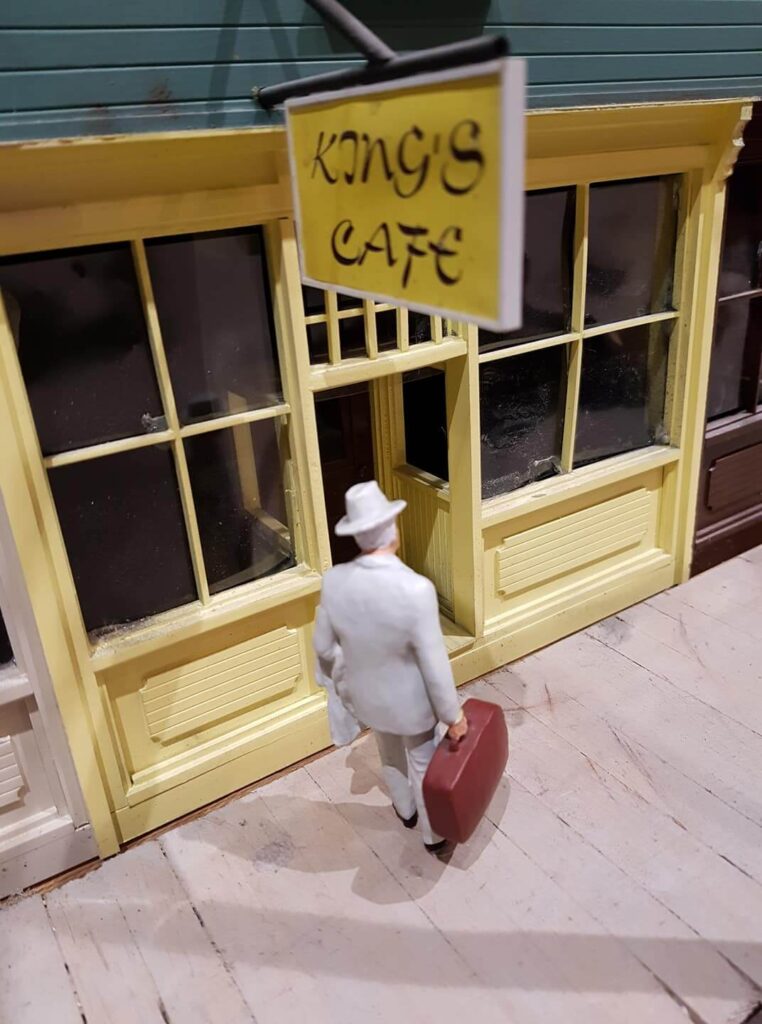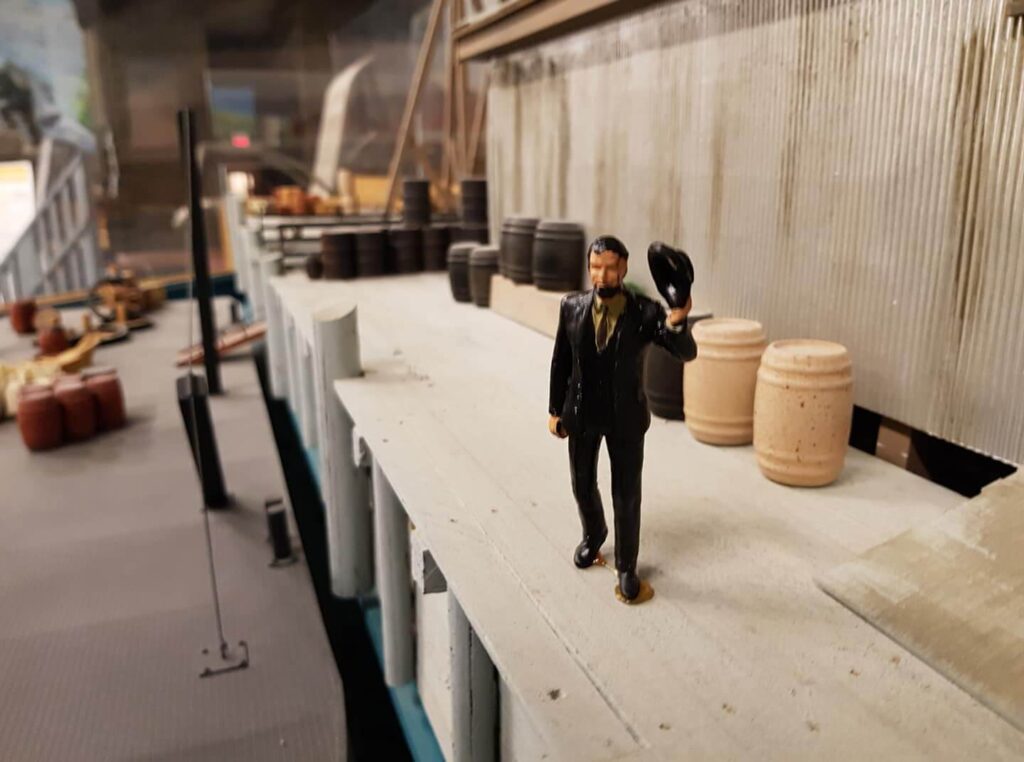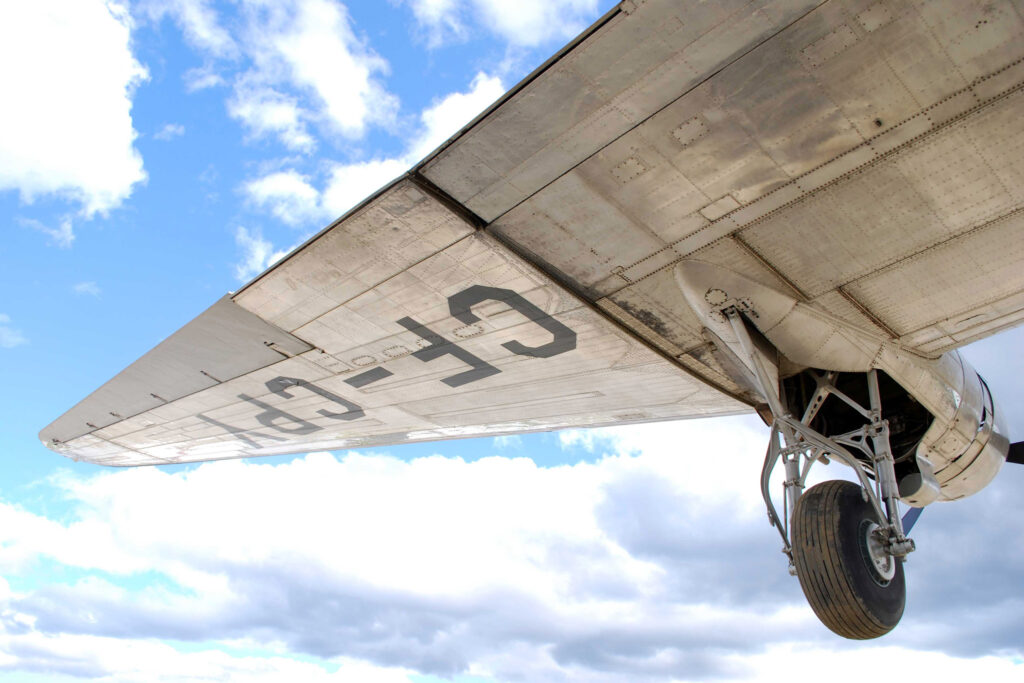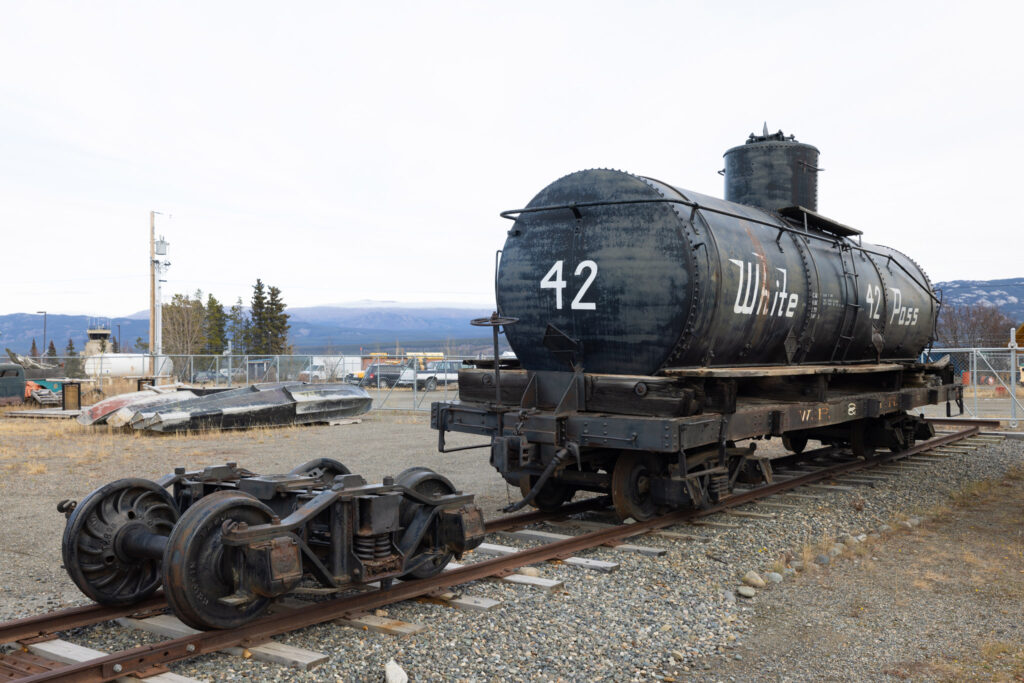During a difficult period of construction on the White Pass and Yukon Route railway, wages were reduced to 30 cents per hour from 35 cents. This was one of the last straws for the workers, and eventually led to a general strike on February 28, 1899. This didn’t sit well with the backers of the railroad, and led to a meeting between several officials and a group of 100 men who represented the strikers.
When Mike Heney, Dr. Whiting, and one assistant met with the 100 men, the group’s ringleader came forward and challenged Dr. Whiting. Taking his rifle, the doctor struck the man with the butt of his rifle, and all the other strikers fled the scene. This forced most of the workers back to the job on March 15 (with the strike being called off on March 17), but didn’t really resolve the labour dispute.
Excerpted from “A Wild Discouraging Mess,” p. 137
When the president, general manager, and chief pilot of United Air Transport headed north out of Cooking Lake (near Edmonton, Alberta) left with 9 passengers he landed on the river in Whitehorse. George McConachie (the pilot) tied up near the front of the office of the White Pass Office, and specifically in front of the office of the president of the White Pass, Herb Wheeler.
Wheeler was quite shocked to discover the United Air Transport airplane outside his office that next morning, and promptly searched out McConachie. He declared that, “This is White Pass County- you and your airplane get the hell out of here and stay out!”
McConachie coolly replied that it was, in fact, free enterprise territory.
Excerpted from “Yukon Wings,” p. 79-80
When Captain William Moore observed just how slow and inefficient the Chilkoot Trail was for reaching the interior of the Yukon, he decided to do something about it. He believed that a good trail with fairer grades was necessary, and hoped that such a trail would allow pack animals initially and might later open up for a wagon road and a train. These hopes were realized when he was told of the White Pass by Skookum Jim.
However, just because he had a new trail in mind didn’t mean that it was going to be used instantly. Many told Captain Moore that the only way to the Yukon was the Chilkoot, and he was foolhardy to even try establishing another route. When he asked Healy for his opinion on the matter, Healy said that, “It would never amount to anything as a route for supplies or traffic for the interior, and I feel sorry for you for wasting your time here.”
Excerpted from “The White Pass: Gateway to the Klondike,” p. 24, 29
When the White Pass Trail was opened up for use during the Klondike Gold Rush, many fortune-seekers and other travellers viewed it as an easier route as they could bring along pack animals to assist, due to the relatively shallow inclines. However, animal cruelty was all too common on the trail and the White Pass Trail was also known as the Dead Horse Trail. It wasn’t always because of intentional abuse, but travellers often banded together to shame those who were purposefully cruel.
One of these instances was recounted by Emma Kelly, a reporter who had come north to document the Gold Rush. While on the trail, she observed a pack-train horse collapse onto the trail, malnourished and incredibly weak. The owner promptly set to whipping the horse, trying to make it stand, but the horse couldn’t budge. In order to prevent further suffering, Kelly shot the horse where it lay. The cruel owner moved towards her to angrily berate Kelly, but the rest of the travellers around her supported her, and the owner quickly backed down.
Kelly mentioned that her supporters had no criticisms for her in that situation beyond the remark that she ought to have shot the owner rather than the horse.
Excerpted from “Klondike Women,” pp. 138-140
In June of 1898, the Yukon Field Force began a long march to the Yukon over the Stikine Trail, a new, “all-Canadian” route. The Field Force was sent as a military body to support the overworked RCMP, and the 203 soldiers were joined by 6 women, including reporter Faith Fenton, and 4 nurses who were desperately needed to help with Dawson’s typhoid epidemic. It was a long march, including 24 days overland from Telegraph Creek to Teslin Lake.
Once in Dawson, the soldiers collected 350$ to build the women a log cabin in Dawson as a show of their gratitude for the nurses who had come so far north. For these women who didn’t have much else of a home, it was likely a needed place to recuperate after such a long march and exhausting work.
Excerpted from “Law of the Yukon,” p.58-59, 108
After only a month of being in service, the “Queen of the Yukon” crashed in a quite abnormal head-on collision. It was operated by the Yukon Airways and Exploration Company, and it was one of the first aircraft based in the Yukon. On the blustery day when it crashed, the “Queen of the Yukon” was being piloted by Tommy Stephen, and jumped off the runway as it was landing, directly into the truck on the side of the runway!
The truck was owned by Billy Puckett, the Whitehorse agent of the Yukon Airways and Exploration Company. As Puckett saw the plane hurtling towards his truck he was forced to run for cover, and after the crash Pucket and Stephen might have had to take a moment to wonder just where to go from here.
Excerpted from “Yukon Wings,” p.10-11)
Gurdeep travels the Yukon teaching Bhangra dancing, and is responsible for Whitehorse being known as the Bhangra Capital of Canada. Beyond Whitehorse, Gurdeep has taught in Dawson City, Haines Junction, and Old Crow, and he has a ready smile, especially while remembering what he learned during his visit to Old Crow: the word shijyàa, or “friend” in Gwitchin.
Gurdeep Pandher was born in Siahar, Punjab. He immigrated to Canada in 2006 and made the Yukon his home in 2011. His Yukon-made bhangra dance videos have been featured on CBC, BBC, Buzzfeed, CTV, and many other platforms.
Ron Chambers marked the time for mandatory hard hats in his construction crew by a solar eclipse during the summer of 1972. When they became mandatory in the late 60s/early 70s for Department of Public Works workers, he was initially irritated with the need for wearing one. Due to the uncomfortableness and how often the early designs fell off, this frustration was warranted.
However, on one of the days when he was wearing a hard hat a chain fell and hit him in the head, and with a smile, he thought that it might be fair enough to continue wearing one on the job.
Ron Chambers is a Champagne Aishihik First Nations elder. He is a mission school survivor, road worker, co-signatory of the Umbrella Final Agreement, and has been at the top of Mt. Logan, amongst all the many other happenings that have made up his lifetime so far.
See that fellow with the suitcase outside King’s Café?
That is 67 year old Paul Meyers just as he is entering the café to apply for a job as Cook. He will walk out the door as their newest hire.
Paul had arrived in Whitehorse on Monday, March 31 and he was hired before April 4, 1913.
A year before he had been a passenger on the Titanic. “The Sunday on which the vessel struck I was on deck listening to the band play on the upper deck. About 8’oclock one of the other passengers told me to stay on deck if I wanted to see the icebergs. About 10 o’clock I was talking to the sailors on deck when the vessel lurched. In an instant ice fell on the deck and I knew we had struck one of the icebergs. He was later told the lifeboats were for women and gentlemen, not for him. He and his friend decided to search around for materials to construct a raft, which they did, launched and floated away from the ship. An hour later the lights on the ship went out, we could see the bow gradually settling. Some hours afterward we saw the ship rise in the air and plunge down. I did not hear any band playing, but I shall never forget the cries of those drowning people.”
He was a veteran of both the civil and the Spanish-American wars. He was with the 106th Pennsylvanians under Col. Zeigler.
Excerpted from Whitehorse Weekly Star, April 4, 1913
Here Remolo Cesari is walking in the early spring 1914 on the wharf thinking of his partner, Dominic Melis. He is waiting for a steamer to take him to Dawson City.
He might be wondering where Dominic was, after all they were business partners.
The Royal Northwest Mounted Police wondered if Remolo was the murderer. On June 11, 1914 a body, trussed up with branches, was discovered floating near the down town docks.
The stakes were high between the two, they had been arguing bitterly over the rights to an invention they were working on, a Perpetual Motion Machine.
Diligent investigators uncovered bloodstained clothing belonging to Cesari, blood at the business partner’s residence, and the probable murder weapon. The RNWMP located a place along the riverbank where the stumps matched the branches tied around the body.
Cesari was sentenced to death by hanging but evaded this fate when he was shot to death during an escape attempt from the Whitehorse Jail.
Excerpted from Whitehorse An Illustrated History, p. 82
Do you have any transportation stories you’d like to see around the museum as a miniature exhibit? Although we can’t take every idea, we’d love to hear if you have one you’d like to add!
